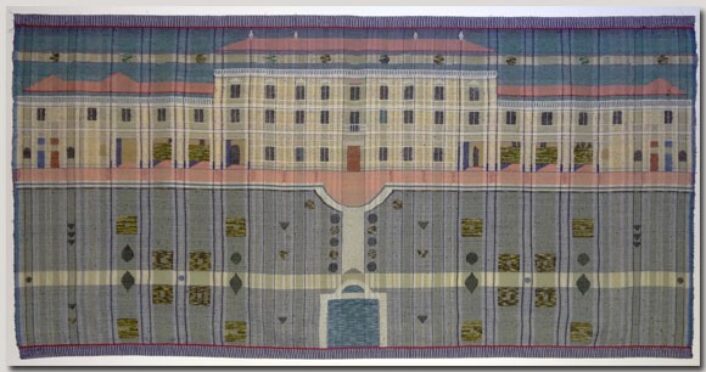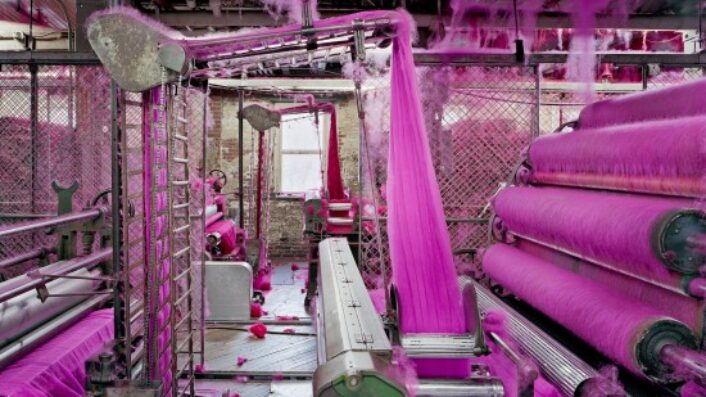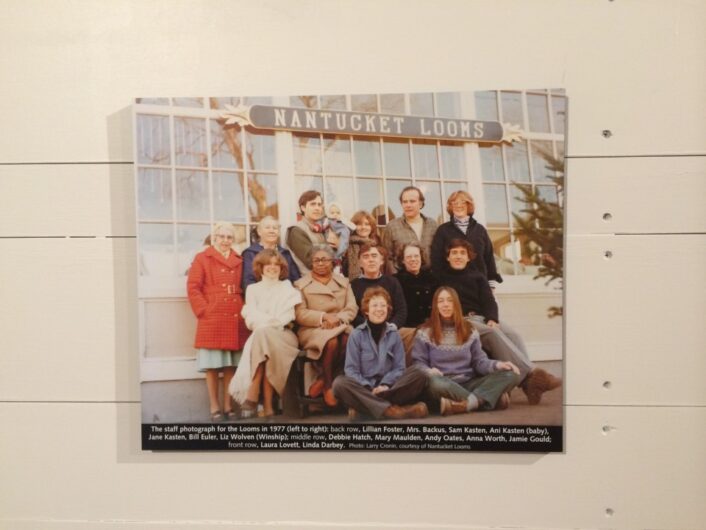Design
Textiles that are the result of weaving and computing
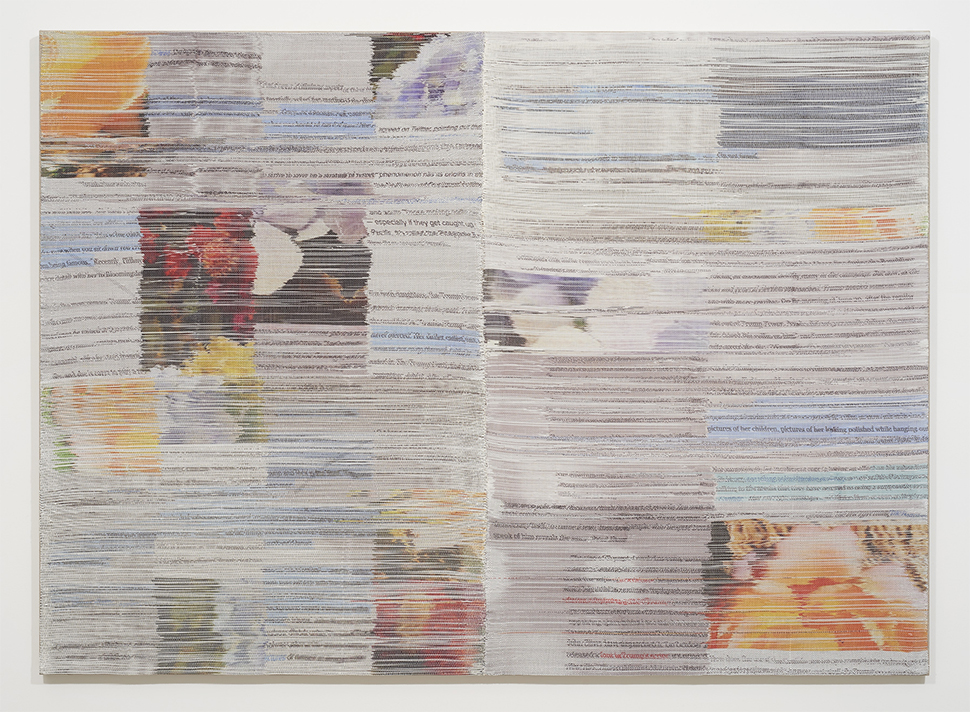
“Pictures of Her Children”.
Handwoven polyester, linen, sublimation dye, acrylic ink, 2017.
Image courtesy of: Margo Wolowiec
Margo Wolowiec is an emerging artist originally from Detroit working with abstract fiber wall hangings that reference patterns found in traditional Navajo rugs and Bauhaus weavings. Often rendered in black, white, and tones of grey, they could be misconstrued for Modernist tapestries.
Wolowiec’s forms are mostly sourced from noticeable glitches found on social media platforms such as Instagram, Tumblr, and Facebook.
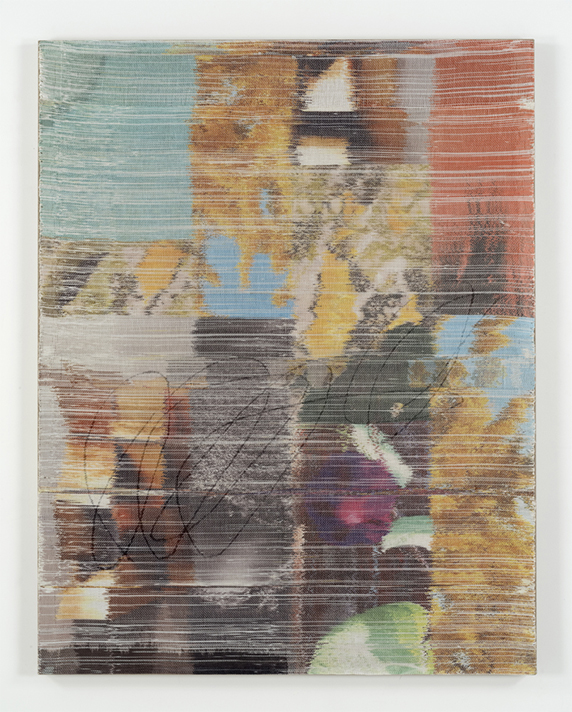
“Selfobject”
Handwoven polyester, linen, sublimation dye, acrylic ink, 2016.
Image courtesy of: Margo Wolowiec
Translating the pixelated images into fiber art is a long and tedious technique of hand dye and weaving. Wolowiec presents an entirely original approach to producing art in the digital age by narrowing the gap between traditional practices of handcraft and modern forms of image-making found through new media technologies.
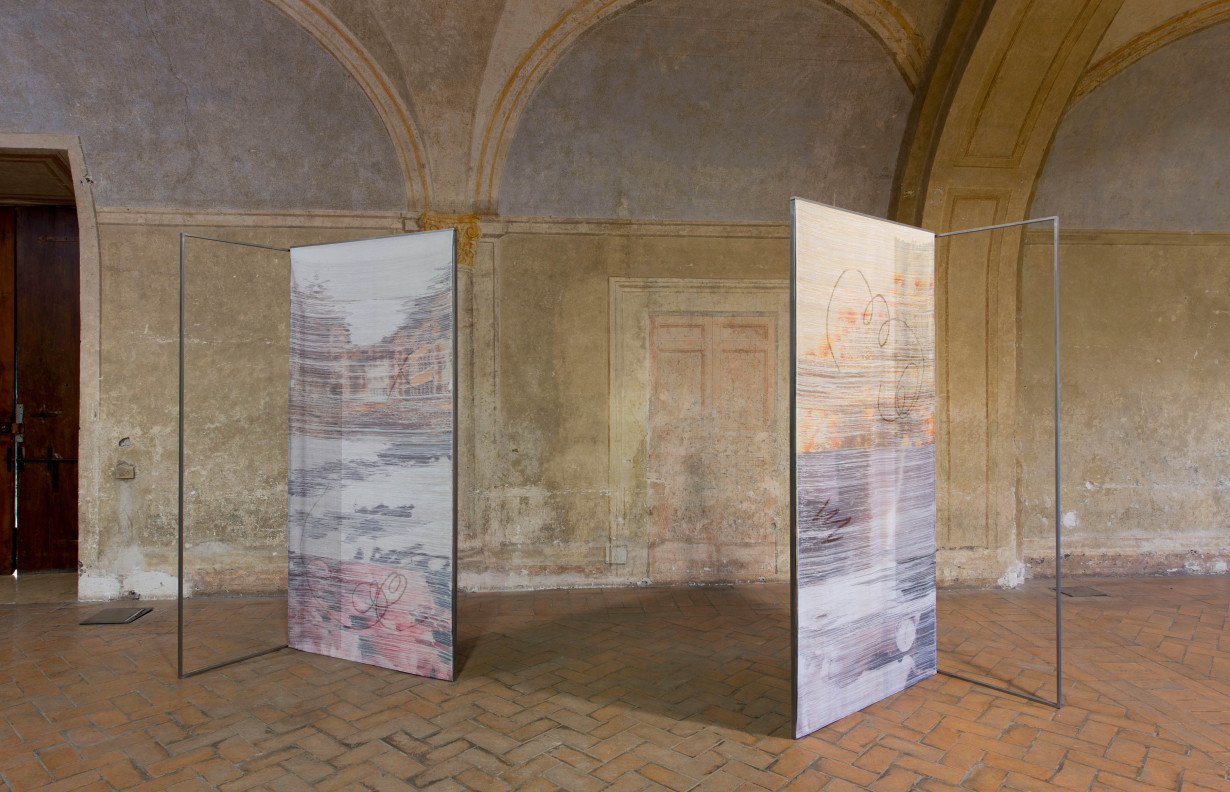
Wolowiec uses hashtags to find images that have a personal significance to her. For example, she recently used pictures of the beautiful landscapes of Big Sur and Joshua Tree which are special to Wolowiec as she recently relocated from California to Brooklyn.
Image courtesy of: The Last Magazine
Wolowiec’s work suggest vibrations and lots of movement. There is scrambling on the fibers… almost a destabilization; or perhaps, an error in the code.
Someone recently compared the work to watching a VHS video. Remember when the tape vibrated with movement and then froze into several glowing horizontal stripes?

Up close, Margo Wolowiec in front of her woven art at San Francisco’s Jessica Silverman Gallery.
Image courtesy of: Art Business
Wolowiec uses the Jacquard Loom, the machine which helped spur the Industrial Revolution. This loom uses a punch card system that scores and processes complex woven patterns. The binary logic of computing dictates that something is either 100% perfect or not, a zero or a one.
This same “logic” is used in weaving, a thread is either up or down, under or over, on or off. This link between computing and weaving is paramount to Wolowiec’s work.
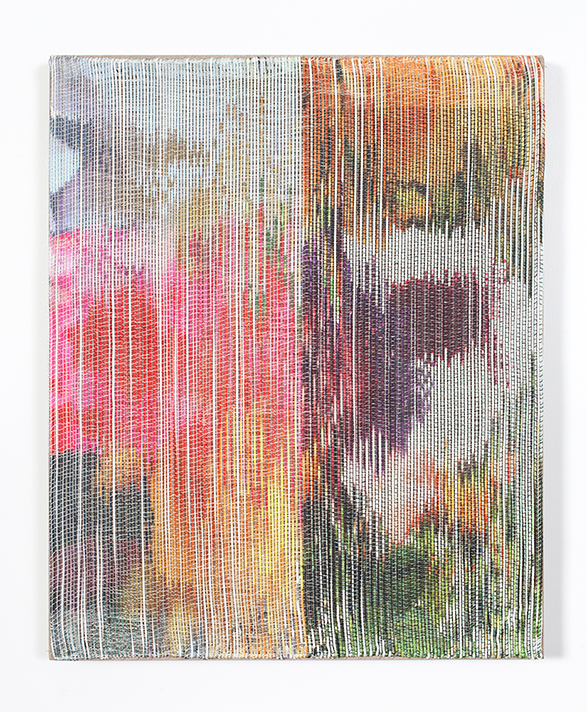
“Daylily”.
Handwoven polyester, linen, dye sublimation ink, and acrylic dye, 2017.
Image courtesy of: Harpers Books
For the past couple of years, Wolowiec has been working on a series of seven weavings affixed on linen called “Rose Garden.” She says that she started this series as a way to personally process the changing political climate after the 2016 election. Typically, the roses in the garden have acted as a distraction during media sessions because rose gardens are symbols of beauty and hope, and also wealth and power. The White House Rose Garden has traditionally a place for bill signings, public ceremonies, and photo ops.
The artist said, “As I have continued to work through this series, the Rose Garden images have taken more and more prominence in each piece. I like that the florals are creeping in more, as I gradually give them more power and space within the work and push back against the news media texts. I think this is a symbol of my own hope for the future, and for the power and space that women are reclaiming in society. The best end to this year for me personally has been the outpouring of women who are speaking out against the high-profile, powerful men that have sexually abused them. It has been powerful and inspiring, and has given me hope that – despite a particularly bleak year – there is a bright future waiting for everyone.”
